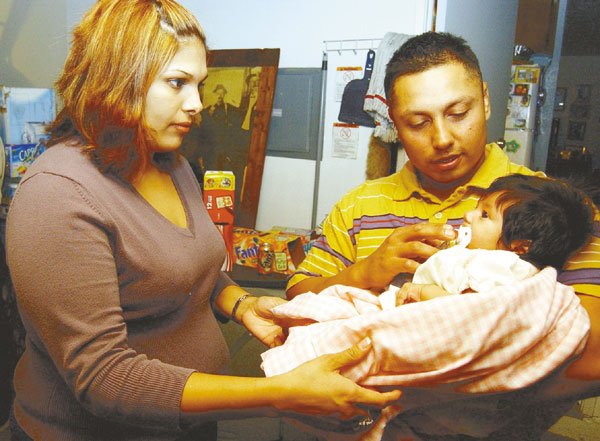Gilroy residents step up and make a difference in their
neighborhoods
For many of the children of E. 8th Street, U.S. Marine Sgt. Raymond Cardoza is a hero – a symbol of what they could become – if they could just survive adolescence in a neighborhood plagued by gang violence.
One person who has made their neighborhood a safer place is Cardoza’s mother, Norma. She is the head of the East Eighth Street Neighborhood Association, a small community of apartment complexes and one story homes, and is working to make it a place where children and neighbors can count on each other and keep crime at bay.
She is just one of many Gilroy residents trying to make a difference in their neighborhoods.
“When you have strong, healthy neighborhoods, you have a strong, healthy city,” explained Daniel Chavez, a neighborhood developer for South County Housing.
He works closely with the various neighborhood groups, facilitating meetings, procuring grants and planning events, and helping area groups mobilize to establish neighborhood watches.
For the past couple of years the city has added about four new associations annually. Now, there are about 16 to 20 associations.
“For me the objective is to try to pull the group together and let them decide what their needs are,” he explained. Each neighborhood has different needs, and each association has different goals. Whether it’s obtaining screens for houses near creeks where the bug population soars, putting up a stop sign, or combating gang violence – Chavez is there to help.
“We try not to promote the cookie stamp approach,” he said.
Neighbors get involved for different reasons and at varying levels of participation.
Judy Hess is an active member of the Summerhill Neighborhood Association that has recently joined the Los Arroyos Neighborhood Alliance – a group of more than 600 families spread amongst apartment complexes and two story homes.
“We thought we should unite this area so it will be stronger,” she explained.
But with the additional manpower, also came more challenges.
Families in the neighborhood have varying levels of income and cultural backgrounds, and at times, people in the neighborhood felt they had more differences that things in common.
“Our neighborhood is really a mini California, a mini USA. There’s a lot of everybody,” Hess said. “We’re so diverse, and that’s also a strength too. We wanted to do something to show that we are all the same. We all have the same concerns about family and safety. I think more crime happens when you don’t know each other.”
So the group established Neighborhood Day two years ago, which allowed residents to set up craft and informational booths to allow families to meet each other and see their individual talents. This year, the group opened Los Arroyos Park – an event that garnered more than 1,000 people.
In the summer, they are hoping to plan movie nights in the park. And recently, the association formed a Girl Scout Troop.
“We have such a beautiful park and neighborhood, and we really want to keep it that way,” Hess said. “It’s just a matter of taking pride where you live.”
Doug Funk and his wife Abbe started the Swaner Drive Neighborhood Association two years ago to help unite the small area of 25 families.
The neighborhood has high turnover rate of renters and the Funks wanted to make sure everyone knows who belongs in area, and who to contact if they ever have a problem.
Any problems people have had, is usually solved by talking, Doug explained.
“Our goal was to make sure everyone knew who should and shouldn’t be hanging around and who to contact if they need to,” he said. “And we’re doing a good job.”
According to Gilroy Police Community Service Officer Rachel Munoz, many of the associations formed after a crime happened in the neighborhood.
She encourages them to establish a neighborhood watch to get to know their neighbors and invest in the one common denominator they share: Their home.
“We need them to be the eyes and ears (for the police department),” she said.
The Rogers Lane Neighborhood Association started 11 years ago and is the longest running group.
The area was once known for its drive by shootings, and police stepped in to meet with landlords and residents to determine why the area was a crime magnet, Munoz said.
Police worked to establish tenant screening practices and held landlords responsible for their actions – or in most cases, inaction – if they failed to report drug use.
Recently, the residents of N. Forest Street were upset that buses traveled along their narrow street 168 times a day. So they worked with the school district and city to alter bus routes to reduce traffic flow.
Munoz considers the associations instrumental in helping change the neighborhood.
“Things will not make a change unless they proactively make a change,” she said.













